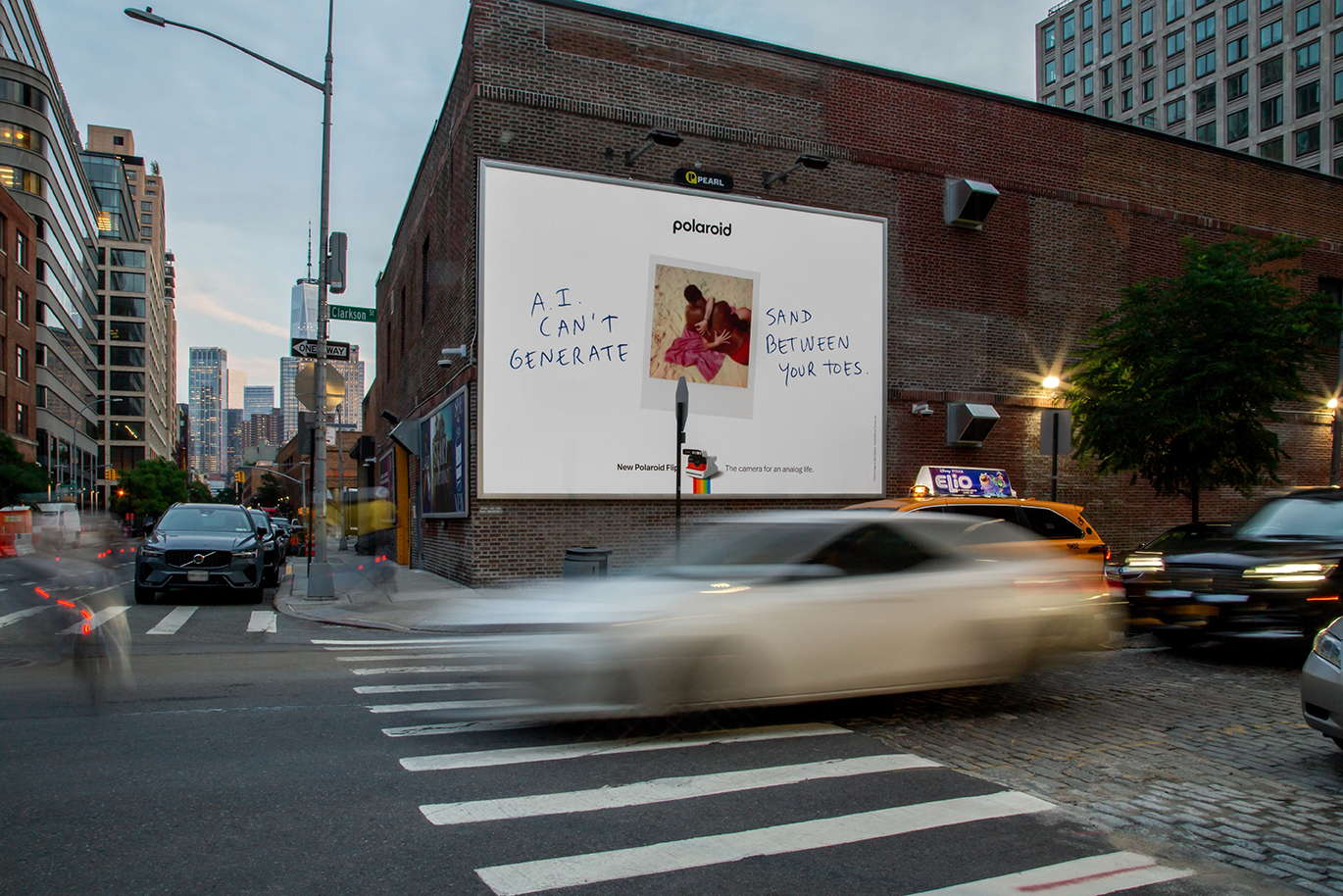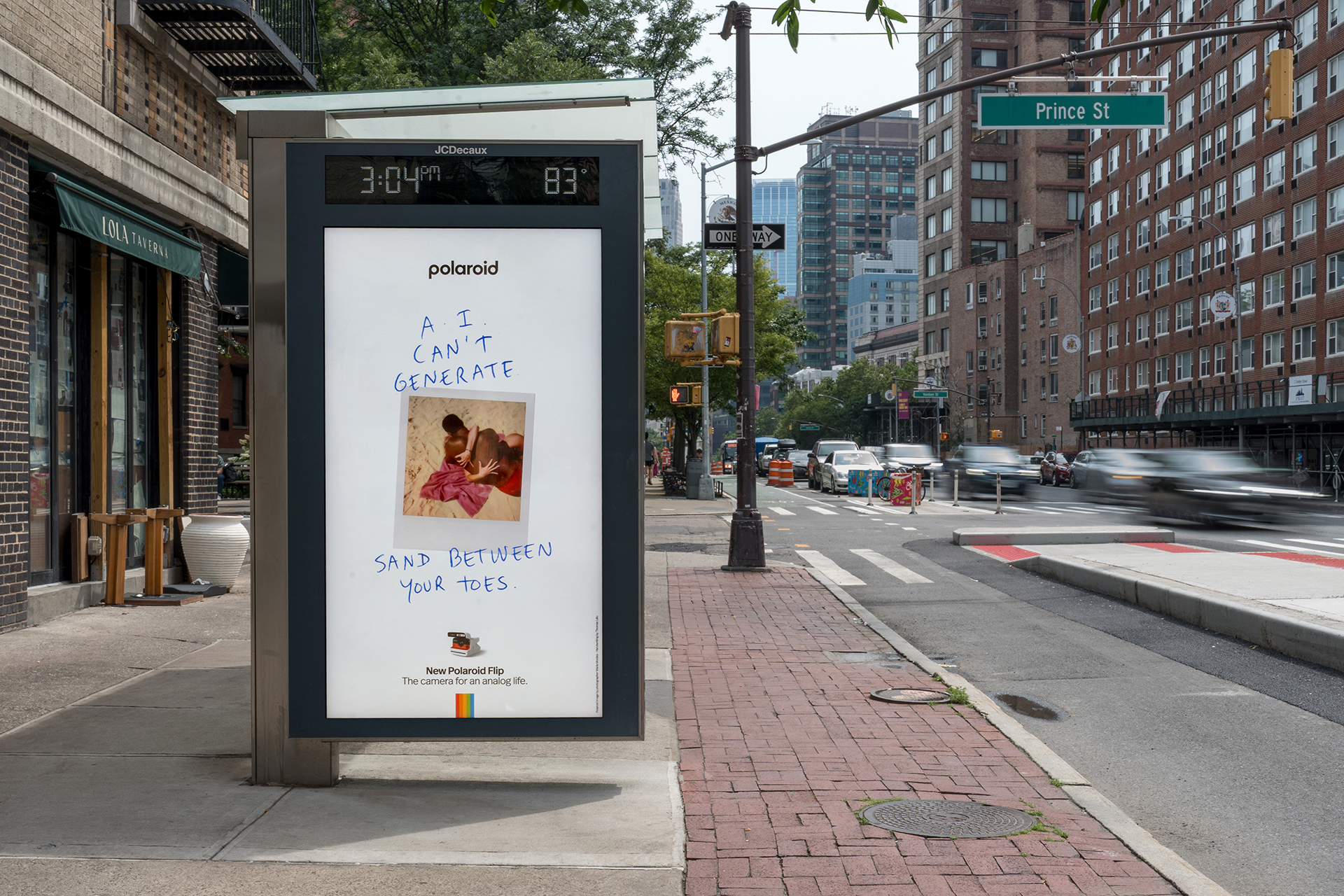You can’t optimise the goosebumps
Scroll through Instagram long enough and you’ll stumble on that NCLGallery carousel declaring: “The newest trend in marketing is hating on AI.”
Among others, this post highlights Heineken’s recent campaign built around a functional bottle-opener necklace — a playful twist on a wearable device designed to keep you company, that still reminds us: “The best way to make a friend is over a beer.”
As well as Polaroid’s new campaign, “The Camera for an Analog Life,” gently mocking our screen addiction while selling the joy of holding an analogue camera in your hands.
But is this really about hating AI?

What I see is not hatred, but a very old human reflex: we want to feel something we recognise. We’re not protesting the existence of technology. We’re protesting our own temptation to replace the messy, physical, emotional parts of life that make us feel alive.

Don Draper from "Mad Men" once said that advertising is based on one thing only: happiness. Not the superficial, polished Instagram version of happiness, but that moment when something touches a nerve in us. The simple things, like the first sip of a cold beer after a long day. Or the bigger ones, like the thrill of learning a new skill. The parquet cracking under your feet as you flawlessly master the choreo in 8-counts with no music. Being happy is to feel — even the slight sadness of takeoff, leaving the most stunning holiday destination behind and tucking it away into memory.
Advertising works when it taps into impulses we already carry inside us: the instinct to belong, the instinct to remember, the instinct to feel desired, safe, hopeful. For that to happen, the story doesn’t have to be perfectly frictionless, but it must feel human-made.
AI-generated work still struggles there. It can remix aesthetics, but it doesn’t know what it felt like to fall in love on a beach, to lose someone, to dance all night until your worries dissolve into thin air.
When brands lean too heavily on AI as the face of creativity, people sense the gap. The result often feels efficient, yet emotionally hollow. That’s why anti-AI campaigns land so well right now. They are not simply “tech-bashing”; they are love letters to human imperfection.
Let the machines do the boring stuff. When it comes to friendship, stick with beer and actual humans. Same goes for Polorid that reminds us that our shaky, badly framed, sun-blinded photo is more real than the most flawless AI render.


Behind the scenes, of course, all the brands are using AI for targeting and media planning. The machine runs in the back office, the human stands on the stage. That, to me, is the healthy tension.
As creators, our job is not to choose between AI or humans as if it were a moral test. Our job is to decide very clearly: Where do we allow machines to support us? Where do we insist on our fingerprints, timing or vision?
Because in the end, the work that stays with us is the work that feels like it could only have come from another human, someone tired, hopeful, a little lost, a little in love — just like us. People don’t buy perfection. They buy the feeling that someone, somewhere, understands them.
At first glance, it sounds pretty swell and bold to call hating AI “the trend.” But maybe it’s something else. Maybe it’s just advertising finally remembering its oldest promise: to make us feel. Happy.
Let's connect













